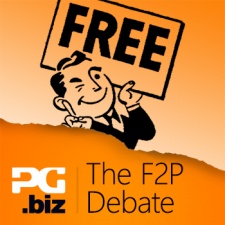Seriously though, even with the ascendancy of free-to-play all but confirmed the argument rages on.
Whether it's the stink kicked up in the wake of Flappy Bird's success or the continued debate amongst members of the mobile gaming community about Ridiculous Fishing's pricing strategy, the debate about which model is best rumbles onwards without abating.
So, if you're a bit confused about which model to use, you've come to the right place.
In the course of this article, I hope to guide you through the major pros and cons for both models and try to provide you with a clear insight into what is the best strategy for your company or your game.
And, to help things out a bit more, a number of industry leading figures have agreed to lend a hand as well.
Paid - unlimited freedom, limited returns
Probably the major benefit of releasing a game for a price tag is that it provides you, the developer, the opportunity to really exercise your creative freedom.
By enforcing an upfront transaction and dissuading all but the keenest from purchasing your game, you automatically grant yourself greater creative licence to impress those who have paid.
Barry Meade, commercial director at Fireproof Studios, made such a claim when he was discussing the decision from his team to release their games - The Room and The Room Two - for an upfront cost - $4.99.
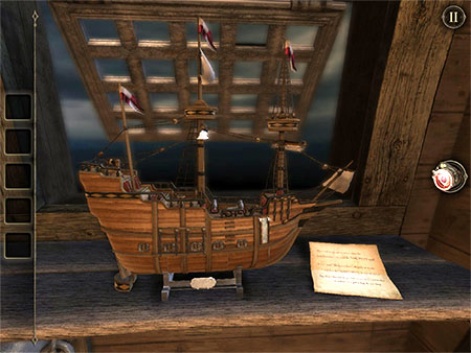
"We wanted to make something that was visually high-end and we figured iPad owners would be more likely to pay a few dollars for a new game that was well made" says Meade.
In fact, the company made a conscious decision to actively not support older iPhones and iPads to ensure they could produce a title that pushed the limits of the devices - actively excluding users to ensure they could realize their vision for a particular segment of the market.
Keep the customer satisfied
And within that segment of the mobile gaming market lies an audience that suits those looking to create something and allow it to thrive without turning to coercive mechanics - knowledgeable gamers.
While mobile app stores remain predominantly the haunts of casual consumers in comparison to portals like Steam, those looking to pay up front are willing to pay for something that they believe is quality; something developers with clear ideas can tap into.
Andrew Smith of AppyNation saw this first hand when he helped promote the release of a new version of legendary 90s game Transport Tycoon.
By choosing to go paid not only did it allow the game to retain the spirit of the original title, it helped it to circumvent problems other notable IPs have found when transferred to free-to-play.
Releasing a paid game means shutting the door on practically every type of mobile ad network.
"With Transport Tycoon, had that game launched as free-to-play - no matter how well designed - the stigma associated with free on mobile by hardcore fans would have been enough to deter many of them from trying the game.
"Just look at Dungeon Keeper's fan reception to see how that can backfire," Smith says.
Different channels
The success of Transport Tycoon as a paid game - $6.99 - was certainly helped because it has a strong reputation in the wider gaming community.
And it is that set of circumstances in which paid games are most likely to succeed - when people know what they're letting themselves in for. As Smith tells me, "Some of the more obvious benefits to launching a paid app are applied to games with a heritage or a licence."
That's great news if you own a major licence or have a proven track record in game development that will get people excited about your game (Vlambeer being one such prominent example). But if you don't, then it can be somewhat of an uphill battle to actually get a paid game noticed by enough people to make an impact.
First up, releasing a paid game means shutting the door on practically every type of mobile ad network as an effective form of promotion.
Not only does that ecosystem work much better with free titles than paid, attempting to return traffic via cross promotion or generating affiliate revenues is pretty much impossible with an audience who have paid upfront and expect an ad free experience.
That means relying on traditional means of promotion through media sites, word-of-mouth and the elusive App Store feature which can make or break a games fortunes.
Platform play
Meade tells me as much when talking about how Fireproof Studios made their big break into mobile at the tail end of 2012.
"The Room landed the paid game Holy Grail of being featured by Apple and that was a giant foot in the door for its journey post release," he says.
"We could never have achieved that initial boost of eyeballs on our own, and in fact we never will with any new IP unless lightning strikes twice and we get on a store banner again.
"But the major thing you need to do remains the same whether featured or not and that is do all you can to get the game into as much media as possible, and in the correct media too."
Paid games make a certain segment of the market feel comfortable.Andrew Smith
Importantly, even getting featured in the games media is no guarantee of blazing success. That's because, whichever way you cut it, gaming sites still remain predominantly of interest to the small core of gamers likely to discover your title in the paid charts anyway.
As Smith puts when discussing the nature of the audience interested in paying up front, "Paid games make a certain segment of the market feel comfortable, feel that they're getting everything in the game, that the game hasn't been 'rigged'... but everything we've seen points to the idea that this market sector is comparatively small, but noisy."
Limited upside
With a small market comes the ultimate problem for many game makers with the paid model - small returns even for relatively small budgets.
"Be realistic" Meade says.
"Far from meaning haystacks of cash, your guaranteed sales level is not much above knee height - you can make a lot of money if your costs are kept small enough, but expecting to make millions is a very big ask."
The decision to put an upfront cost on a game doesn't just limit your audience; it limits their Lifetime Value (LTV) meaning that you're unlikely to make more even with additional paid content.
Ultimately, releasing a paid game suits those people who have a clear idea of their product in mind, are capable of producing the necessary quality to attract regular interest from publications and app store curators and have the speed to turn around games quickly.
Sweden's Simogo are probably the pioneers of this approach, having released two BAFTA nominated games in the shape of Year Walk and Device 6.
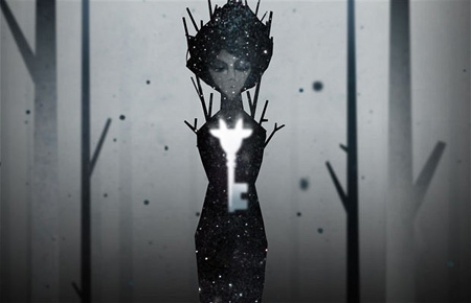
But even their gains are likely to be limited, necessitating a rapid turn around and creative process to compensate.
Free-to-play - For big successes (and bigger teams)
Releasing a game as a free-to-play title is seen to be by some as diametrically opposed to releasing a paid game. It isn't, of course, but it is notable that many of the strengths that are considered part and parcel of the free-to-play model are pretty much flipsides of what happens in the paid model.
The biggest advantage is perhaps the most obviously opposite of the paid release experience: the non-existent barrier to entry. Eric Seufert, author of Freemium Economics and head of marketing at Wooga, explains it as thus.
"The foremost benefit of going freemium is ease of distribution: at a price point of $0, no economic barrier exists to adoption for any potential player.
At a price point of $0, no economic barrier exists to adoption for any potential player.Eric Seufert
"At even $0.99, you preclude a huge swath of the smartphone-owning public from trying your game: kids that don't have access to a credit card, people that hold prejudices against IAPs, people that simply don't have any disposable income at the moment, etc."
As a result, it means that developers have far more freedom to consider a variety of ways to monetise and promote their games.
In the case of the former, Oscar Clark, evangelist at Applifier and author of Games as a Service: How Free to Play Design Can Make Better Games, explains the cavalcade of models that developers could explore to help them make money.
"First we have the perhaps all-too familiar 'consumable good' which includes everything from fuel for your race car, energy crystals, health potions, etc. These give a temporary benefit to the player but once used the benefit is gone.
"Second we have the permanent goods which are usually named items we aspire to obtain. These provide players with a motivation to obtain them and the promise of value... especially where players have to act in order to get them (rather than just buy).
"The third type of IAP is the durable item. These are goods which are specifically designed to increase the players sense of investment in the game and as such are all about building utility. And we can't forget advertising and there are many platforms out there with different approaches to help you to monetise players."
Burst and extend
In short, there are a number of clear options open to developers looking to make money.
Speaking of advertising, and returning to the point about game promotion, free-to-play also offers developers clear advantages looking to promote an app. On a practical level, it makes social sharing and advertising more effectively but, as Seufert explains from a theoretical perspective
"Free-to-play is also a lot more conducive to virality [than paid games]" - making it a powerful option for those looking to distribute more widely than paid counterparts.
And ultimately, free-to-play gaming can call two interlinked advantages over paid that really makes it enticing to many developers: greater volumes and greater revenue potential with it.
When you switch to free-to-play, you aren't just choosing a price tag. You're choosing a different philosophy.
While reports from the likes of Trademob have struck fear into the hearts of developers by suggesting that you need 80,000 downloads to top the US store in a little over 24 hours, the fact is those numbers dwarf the downloads needed in the paid charts up to 20x over; an impressive economy of scale.
Multiple experts
So, if you can make your free app attract the punters in their thousands, you have a number of opportunities to potentially make limitless revenues off happy users of your apps.
Whether through advertising, IAPs or some combination of both, it is entirely plausible that you can never cap your LTV and begin down the path of generating hundreds of millions of revenues that the likes of Supercell, GungHo and King have reported over the past years.
However, while it all seems rosy in the garden of free-to-play there are some clear hurdles that a studio will need to cross to become a successful free-to-play developer.
The first is the barrier of entry in terms of studio size. What I mean by this is that, while the paid model can support small teams with limited business experience, the demands of most free-to-play titles aside from fluke hits like Flappy Bird mean you need a strong team full of experts to deliver results.
I ask Seufert about how easy it is to build a successful freemium game and his answer was simple: it isn't.
"It's extremely challenging, and it requires a broad set of skills that smaller studios generally don't have access to: data analysis, analytics architecture and engineering, game economy management, etc," he says.
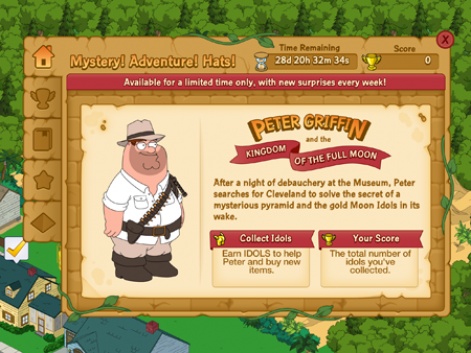
"Freemium is great if a developer is prepared and qualified to iterate quickly on a product in reaction to data; it's terrible if it's just a pricing strategy."
Service mentality
That final point is particularly important when considering going ahead with a freemium game.
When you switch to free-to-play, you aren't just choosing a price tag; you're choosing a different philosophy for your concept. Instead of releasing a clear product, you are likely committing yourself to the long haul of regular content updates, long term analytics and, ultimately, a lot more effort than a paid counterpart.
A good example of this is The Sandbox by Pixowl.
Speaking on a UA panel, Sebastian Borget, co-founder of the company, said the following when asked about ensuring better user retention for their game.
"After three weeks, DAUs start to drop away so we have a major fix every six weeks and a minor fix every three weeks."
That's a sizeable effort for any developer to make, irrespective of their size or their financing. So, if you're considering the move to free-to-play then you really need to be prepared to change your mindset about the way that you make your game (from boxed release to longer term service) to fit in.
The start of the solution
In particular, and as a final thought on free-to-play, your attitude towards getting paid in the end has to be more resolute and harsher than on a free game.
As Clark puts it, "A problem I see comes where developers think that going free is enough.
"That because they made the game that players owe them to give them money. That's just nonsense. I don't care how many hours you put in. I only care what future value I expect from the game and why that motivates me to play. That's not simple - but it's really important.'
So that means that as a developer you have to put the hours into working out the best way to make money from your users. This can be tricky to do; after all, honing the whole process of mobile monetisation remains tricky to companies with deep pockets like Zynga - let alone anyone else.
But as a parting thought, Clark has another handy insight into the way that you can consider this problem.
He tells me developers shouldn't fall into the pay-to-win approach or be short-termist money grabbers (the "don't be a dick" philosophy according to Clark). Instead, they should look to be creative about ways to make money in a way that reward players.
"Don't forget that players will only buy if they can expect future value by doing so" he says.
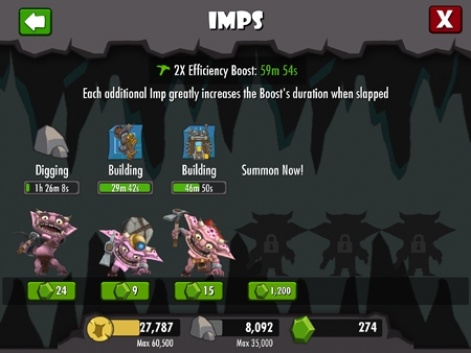
"In-app purchases and virtual goods can do amazing things if we try. They can create new strategies of play, new tactical choices, ways to make the game feel more personal or even new ways to interact and show off with our friends.
"There are as many ways to leverage freemium design as there are ways to create game mechanics. Lets free our imagination and be smarter about how we use these techniques to make better games rather than to just allow players to skip the benefits of playing."
Free-to-play may therefore offer you less creativity to create a fully-fledged product than the paid model does. But for those able to think up smart ways to monetise and who have the capability of building a team to maintain the whole cycle of acquire, engage and retain, it offers genuine opportunities to get rich.
To charge or not to charge?
So which model is best to choose? The answer is likely to be frustrating to those of you hoping for a definitive choice but the one truly clear thing our experts suggested was that you should choose the model that is best for your game and your company.
This may seem like a cop out but it isn't. I spoke to Eric Seufert about whether developers should make their game free and he devised this little test which clearly implied it isn't a model for everyone.
"Is my target audience big enough that, even if only 5 percent ever pay me, I'd make enough money to be profitable?
"Is that target audience reachable beyond only paid marketing campaigns? Could certain portions of that target audience potentially become fanatical about my product and pay me a lot of money? Could someone realistically get $5 worth of value out of my product? $500? $5000?
"Will someone feel like they received commensurate value after paying me when using my product? If the answer to any of those questions is 'no', then don't go with freemium."
At the same time, I ask Barry Meade whether Fireproof would consider going free-to-play and he doesn't rule it out either.
"I think Fireproof would let the game decide the model - if we came up with a cool idea that played a like a free-to-play game we would probably make it free-to-play," he says.
The biggest secret of them all is to make a good game in the first place.
"But for the moment we want to make more immersive games and so paid just makes more sense. To us what's important is that the model supports the game, not the reverse."
Horses, courses
And that, really, is the point of this. Free-to-play is, of course, in the ascendancy and is dominating the market for a reason.
Andrew Smith doesn't shy away from telling me that AppyNation recommends developers to go that way as, "There are many ways a paid game can succeed, but that success is inherently limited, and there are far more ways they can fail than with free".
That doesn't necessitate the end of the paid model either. It is in the niche, it is not that profitable for larger teams and it does restrict your distribution options.
But it still remains a valuable option for small nimble teams with good ideas and ability to release quality quickly.
And really the biggest secret of them all is to make a good game in the first place.
When asked about selecting monetisation model, Clark said, "Stop worrying about that. Work out how to make the most delightful repeatable experience which will sustain a players interest for more than 100+ days."
If you can create that kind of game, then whichever model you choose is destined for success.

